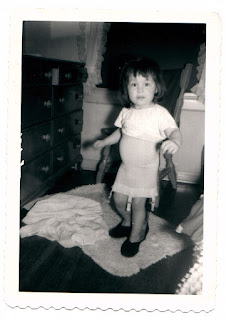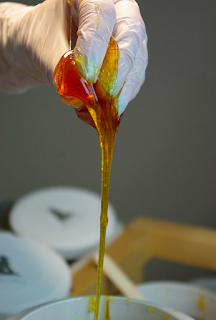Shoe Stories
In Footnotes on Shoes, an interdisciplinary group of writers reflects on
the cultural meanings of shoes and, in particular, women’s fascination with
shoes – something which it seems has existed through the ages and across the globe.
The editors Shari Benstock and Suzanne
Ferris (2001) note in their introduction that there is an Imelda Marcos lurking
in each and everyone of us, referring to the infamous wife of the Philippine
dictator who amassed more than 3,000 pairs of shoes during her lifetime. Women
seem to have an insatiable lust for shoes.
Feminist scholars have had
plenty to say about this female obsession with shoes (Wilson, 1985; Wolf, 1990;
O’Keefe, 1996; Bergstein, 2012). Initially,
they viewed women wearing high heels as the victims of male oppression. Stiletto
heels were the ultimate symbol of female subjugation, reducing their wearer to
the position of sex object, crippling and deforming them in the name of male-defined
beauty norms, and preventing them from being able to run away from male
predators (Gamman, 2001). This radical take
on women’s shoes was later replaced by a more nuanced view whereby feminists
acknowledged that shoes could also be linked to female pleasure and
desire. Such pleasures were by no
means innocent, however. The desire for
beautiful shoes was allied to sexual fetishism, whereby women employed shoes as
a way to display femininity and revel in the joys of female narcissism (Nochlin,
1994; Steele, 1997). Sexy became subversive as ‘bad girls’ donned high-heeled leather
boots along with suspenders, fire-engine-red-lipstick, and
underwear-as-outwear.
While I appreciate these
scholarly attempts to couple the wearing of sexy shoes with the pleasures of
femininity, they still sound pretty ambivalent to me and, truth be told, just a
little pathological. When couched in the language of psychoanalysis (fragmented
body parts, perversion, penis envy), the sensual joys of wearing beautiful shoes
remain hard to reconcile with a strong, feminist persona. As a veteran feminist with a longstanding
obsession with shoes, I feel called upon to share some of my own shoe stories. With
all due respect to the feminist critique of shoes as sexual objectification, feminine
masquerade, and consumer fetish, I want to explore some of the embodied,
everyday interactions with shoes which have been a part of my life and – I
suspect – of many other women’s lives as well.
The obvious starting point for my biographical reflection is the
photograph above. It was taken when I was about 2 years old. I remember finding
the photograph in a drawer in my grandmother’s house many years ago. In it, I
am wearing my grandmother’s shoes as well as a girdle, my baby tummy clearly
outlined and the stocking fasteners dangling in what I clearly saw as
decoration. My grandmother allowed me to play dress-up with her clothes and I
still remember the long, slinky silk nightgowns with lacy straps, one of which
is lying discarded on the floor. Mysterious articles of underwear. An
intriguing powder puff. Strings of beads in different shapes and colours. But,
most of all her shoes. What was the attraction, I wonder. Tiny bare feet thrust
into roomy dark spaces. Did I feel grown up? Perhaps this was a two-year old’s
attempt to enter another world, the mysteriously enticing world of
grown-ups. I was alone in my fantasy
when someone intruded, snapping my picture and capturing the surprise in my eyes.
I am clearly not posing for an audience or performing child-like theatrics for
appreciative adults this time, but disturbed in the midst of my own world.
***
This was, of course, only the beginning. Take my Uggs. Another tale of
slipping bare feet into a dark interior, this time one that is lined with
fleece. Instant comfort. The feet are encompassed, warm and toasty,
delicately caressed. But it also feels
just a tiny bit transgressive. Uggs are fashionable, but, as the name suggest,
ugg-ly. Commonplace and practical, but also expensive and luxurious. They are only boots, but, at the same time,
so much more. I wore them once to an opera under a fancy dress. A middle-aged
woman making a teen-aged fashion statement.
I have imagined wearing my Uggs to bed, just them and bare skin. They
are my comfort blanket when I am on a business trip, far from home and in need
of something familiar. When I bought
them, I took them on the plane as hand luggage. The woman at customs informed
me that I couldn’t take the special cleaning spray with me due to regulations. Seeing my dismay, she laughed and said: "Here, let me spray them first. I know just how to do it. I have three
daughters and they all have Uggs." Female bonding over shoes. A common practice, I soon discover. Women
sharing a secret passion for shoes, an experience anyone with Uggs will
understand. Complicity with the craziness of it, I suppose.
I have hundreds of shoe memories. I can remember specific shoes in the
most embodied way possible: how they felt to touch, the smell of the leather, the
small imperfections. Burgundy suede boots. Leaf green pumps. Platform shoes,
woven Mexican huaraches, black nylon boots with fuck-me high heels, clunky
sandals with toe thongs which my mother referred to as my ‘Jesus shoes.’
What makes these shoes so memorable? The particular kind of stride that
is possible in these shoes: out in the world, head held high, long steps or
short, mincing ones. The sensation that when I wear them people will be
compelled to look at my feet. I will be noticed. Here I am.
***
At a conference, dressed in black for the hip look favoured in gender
studies, I am wearing sport shoes, black with silver and gold stripes on the
sides. My feet peek out from under the speaker’s table and someone notices. ‘I
love your shoes,’ she whispers. Not just my paper. The shoes add…. what
exactly? The embodied persona of the scholar.
I do not want to appear simply as a disembodied mind, but as someone who
is playful, maybe even a bit transgressive.
Someone who has her feet on the ground. A sensible feminist who has no truck with the feminine beauty
system. But still there is just a touch of naughtiness...
***
I wouldn’t have used the word shoe obsession for myself until I started
dancing tango. Most women who dance
tango are heavily ‘into’ shoes: shoes with stiletto heels and exposed toes,
delicate ankle straps and glittery leather, in every imaginable colour and
embellished with silver strips and sequins, ribbons and bows. I not only spend
many hours of every week dancing in these shoes. I think about them. I dream
about them. I devote hours to comparing and admiring shoes with the other (women)
at the tango salon and have embarked on numerous shopping expeditions, intent
on finding yet one more pair of soul-satisfying stilettos. I now have an embarrassingly
large collection of more than 30 pairs of dancing shoes which have to be housed
in their own closet. If tango with its image of hyper-heterosexist machismo and
female subversiveness provokes some discomfort among feminists, shoes are clearly
part of what makes it problematic (Davis, 2015).
But my passion for tango – and, particularly, for tango shoes - have
taken their toll. My feet are on a downhill trajectory. Wearing high-heeled shoes and dancing so many
hours on the balls of my feet, which is what tango requires, had not only produced
unsightly bunions, but my big toes are drifting inward, making my feet
hurt. My tango friends advised me to
visit an orthopaedic surgeon who specialized in dancers’ feet.
I made an appointment and several weeks later, found myself in his
waiting room before our first consultation.
I observe a young woman with the lithe body of a ballet dancer. She is
on crutches, her right foot encased in an orthopaedic shoe, the kind that is
used after surgery. I watch her surreptitiously, sensing her nervousness. She
enters the surgeon’s office and is gone for about ten minutes. When she comes
out, she is crying silently, tears streaming down her cheeks. Not a happy
consultation. My turn next. After examining my feet, the surgeon explains that
while he would ‘love’ to fix my toes, just move them over a centimetre or two,
he wouldn’t advise it and advocates a more cautious approach. "Don’t have this surgery unless you really
can’t walk anymore." Surgery does not make your feet ‘as good as new.’ There are lots of side-effects, almost invariably
chronic pain, and the spectre of repeat surgeries when the bunions grow back as
they usually do.
Better to face facts. My old feet will never come back. The deluge of
advertisements for foot surgery (often accompanied by a vacation in a luxurious
hotel with spa) draw upon the illusion of make-ability which is integral to the
culture of late modernity. We cannot
accept that there are parts of our life beyond our control. We believe that
everything can be changed, improved. With a will, there is a way. However, my feet were telling me a different
story. This is not a story of dramatic intervention, of remaking my feet and,
by implication, my life. It is a story
about accepting what cannot be changed, damage control, maintenance. Listening
to my feet when they protest. "We will
let your wear those beautiful shoes, but we are here, too, and enough is
enough."
***
I am in Buenos Aires and a friend recommends that I try Leo. She and her family make custom-made dance shoes. "They are not fabulous shoes like the ones you have now," my friend warns me, "but you will love them. I promise." Leo
takes stock of my feet, nodding sympathetically. She instructs me to stand on a
piece of paper, as she traces their outline with a pen. She proceeds to advise how high the heel
should be (not too high) and where my feet need extra support (padding under
the toes). Once completed, the shoes are
just right for me, anatomically designed so that I can dance without pain, sexy
enough that I feel like a real tango dancer.
Where do these shoe stories end?
Not with a dramatic flourish. I
have had to learn to negotiate my passion for shoes, to take stock and re-think
my options, to live with my disability and adjust my desires to my body (rather
than the other way around). Sobering
insight, lesson, and social critique, all in one. As I write this, I
contemplate my bare foot, propped up on my desk. The toes are slightly curled,
wide and flat, misshapen. I feel
alienated. Surely this foot cannot belong to me. I am elegant and admired, a worldly
intellectual and a desirable dance partner; this foot cannot be mine. But, alas, it is.
***
I paint my toenails with sparkly blue nail polish. There, that’s better. I massage them, apply herbal crème, not
forgetting to rub between the toes. I put them in warm socks. I stand on them,
feeling the ground under my feet, rocking slowly from the balls of my feet to
the heels as I have been instructed in yoga class. I can walk briskly on these feet, pedal my
bike with a vengeance, and climb stairs, two steps at a time. And, yes, I can
still dance on them, use them to make coquette moves, slide them along my
partner’s foot, giving a companionable tick against his shoe. My feet have taught me that there are limits
to my passion; I cannot give it full reign. My feet allow me to dance in my
beautiful shoes, but only if I acknowledge at some point that enough is enough.
And, yes, a day will come when I may need to shed my spike heels for more
sensible shoes or even the androgynous sneakers designed for younger dancers.
Perhaps it will be like dancing in Uggs, I think. With graceful stoicism, I will face the music
and, yes, I will keep on dancing.
Kathy Davis is senior research fellow in the Sociology Department at the VU University in the Netherlands. Her research interests include: sociology of the body, intersectionality, travelling theory and transnational practices; biography as methodology and critical and creative strategies for academic writing. She is the author of many books, including Reshaping the Female Body (Routledge, 1995), Dubious Equalities and Embodied Differences (Rowman & Littlefield, 2003), and The Making of Our Bodies, Ourselves: How Feminism Travels Across Borders (Duke, 2007) and Dancing Tango: Passionate Encounters in a Globalizing World (NYUPress, 2015).
References
Benstock, S. and S. Ferris, eds. (2001) Footnotes on Shoes. New
Brunswick:Rutgers University Press.
Bergstein, R. (2012) Women from the Ankle Down. New York: Harper.
Davis, K. (2015) ‘Should a Feminist Dance
Tango? The experience and politics of passion’, Feminist Theory 16, 1:3-21.
Gamman, L. (2001) ‘Self-Fashioning, Gender
Display, and Sexy Girl Shoes: What’s at Stake – Female Fetishism or Narcissim?’
in: S. Benstock and S. Ferris, eds. Footnotes
on Shoes. New Brunswick:Rutgers University Press, pp. 93-115/
Nochlin, L. (1994) The Body in Pieces: The Fragment as a Metaphor of Modernity.
London: Thames and Hudson.
O’Keefe, L. (1996) Shoes: A Celebration of Pumps, Sandals, Slippers, and More. New
York:Workman.
Steele, V. (1997) Fetish: Fashion, Sex and Power. Oxford:Oxford University Press.
Wilson, E. (1985) Adorned in Dreams: Fashion and Modernity. Berkeley: University of
California Press.
Wolf, N. (1990) The Beauty Myth. London:Chatto and Windus.






You shared useful content with us thanks for sharing with us. Keep posting!
ReplyDeleteBuy Kamagra Tablets UK
Kamagra Oral Jelly Tablets UK
Valif Oral Jelly Tablets UK
Femalegra 100mg tablets UK
Buy Sildamax Tablets UK
https://www.sephorasale.store/
ReplyDelete